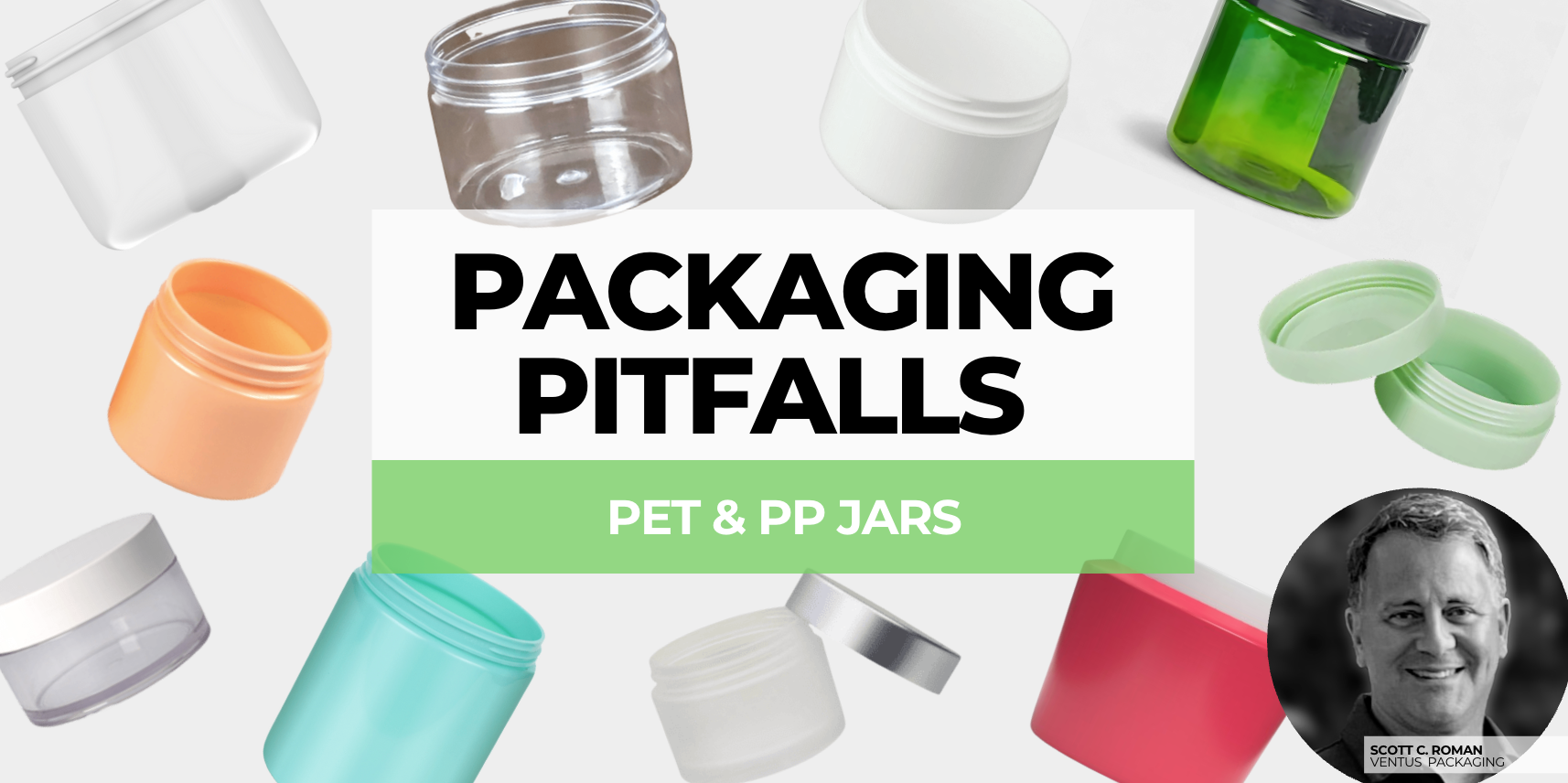
Top 3 Watchouts for PET and PP Jars with Scott Roman
PET and PP jars are some of the most utilized components in beauty and personal care thanks to their versatility, durability, and aesthetic appeal. But despite their popularity, these jars come with critical risks that can disrupt an innovation launch if not addressed early on in development. In this edition of Packaging Pitfalls, I’ll cover the top three risks associated with PET and PP jars—and how to prevent them.
Starting a new project? Schedule a meeting with a Packaging Pro to avoid common packaging pitfalls for your component types.
1. Insufficient Overflow Capacity (OFC)
Overflow Capacity (OFC) directly impacts your legal label claim and consumer perception. A jar with insufficient overflow capacity may not hold the volume advertised on the label once tolerances and internal components are considered.
Implications
- Risk of under-filling or noncompliance with volume claims
- Potential regulatory penalties and consumer trust issues
How to Avoid
Start by reviewing the OFC listed on the jar’s technical drawing. From that, subtract:
- Plastic jar tolerance
- Sealing disk volume
- Headspace allowance
- Filling equipment tolerance
The remaining volume is your true label claim in milliliters or fluid ounces. If claiming by weight, convert using your product’s specific gravity to determine grams or ounces.
2. Decoration Adhesion or Compatibility Failures
Artwork can be the first point of contact a consumer has with your product on the shelf. However, without proper adhesion or compatibility testing, decorative finishes like silk-screening, hot-stamping, or coatings can degrade quickly leaving your product looking worn, inconsistent, or less premium than intended.
Implications
- Peeling or fading decorations reduce perceived product quality
- Chemical interactions may cause ink or coatings to degrade over time or to transfer to a consumer’s fingers or hands.
How to Avoid
Test all decoration types (spray coatings, hot-stamping, silk-screening, heat-transfer labels, pad-printing, etc.) for both adhesion and compatibility with your product. If issues arise, adjust dwell times, curing conditions, or ink compositions, or apply a UV-cured topcoat to isolate the decoration from the bulk formula.
3. Material Incompatibility with Product
Not all resins play well with every formula. When PET or PP jars are paired with incompatible ingredients, (especially essential oils, active skincare compounds, or volatile solvents) performance issues can arise.
Implications
- Migration of ingredients through the jar walls
- Paneling or cracking that compromises product integrity
How to Avoid
A material science analysis can identify potential negative interactions between the jar resin and the formula. Follow up with package compatibility testing to validate your findings. Don’t wait until stability testing to address this- aligning materials early reduces costly surprises down the road.
By proactively addressing overflow capacity, decoration performance, and material compatibility, you can avoid common pitfalls and deliver a better experience for consumers.
About the Author

Scott is an award-winning package development professional with 30+ years of multi-industry experience. A seasoned packaging expert with extensive experience in beauty and cosmetics, Scott led packaging innovation for the makeup category at Estée Lauder, driving projects from concept to launch in lip, foundation, primer, and makeup / skincare hybrid packaging. Before that, he directed package development for Tom Ford Beauty, overseeing luxury packaging in fragrance, makeup, and skincare. With expertise spanning all cosmetic packaging materials and processes, Scott has a strong background in project management, packaging development, and on-site production across global facilities.
Scott Roman | Ventus Packaging Solutions LLC |Sroman@ventuspack.com
Looking for plastic bottle packaging? Browse the Impacked marketplace today to find a component for your next project:




